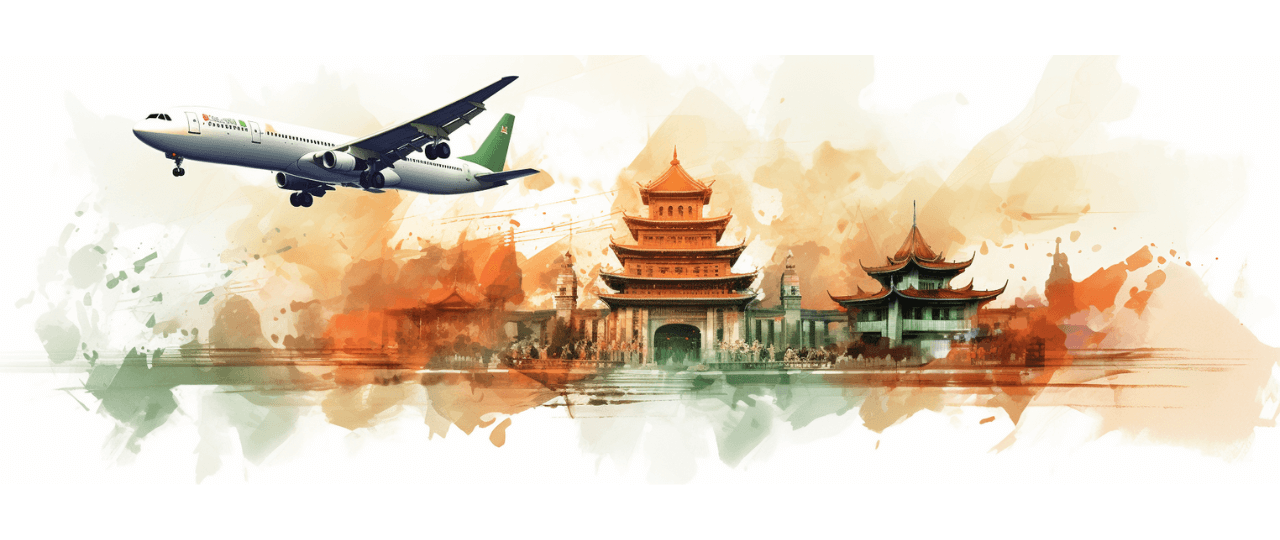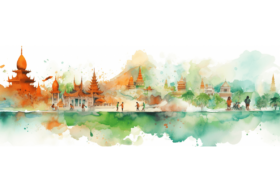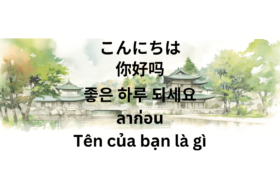Are you dreaming of an unforgettable family vacation? Here is a guide on how to travel in Asia with your family. Look no further than the vibrant and diverse continent of Asia! Renowned for its rich cultural heritage, stunning landscapes, and myriad family-friendly destinations, Asia offers an unparalleled experience for travelers of all ages. Whether you’re exploring Tokyo’s bustling streets, relaxing on Thailand’s pristine beaches, or immersing in the historical wonders of China, each Asian country promises a unique adventure. In this guide, we’ll navigate the essentials of planning a family trip to Asia, from choosing the perfect destinations and accommodations to ensuring a safe and enjoyable journey. Get ready to create lasting memories and introduce your family to Asia’s incredible beauty and diversity. Let’s embark on this exciting journey together!
Choosing the Right Destination
Choosing the right Asian destination for your family trip is exciting and crucial. This diverse continent offers many experiences, each with its unique charm and attractions. From the high-tech cityscapes of Tokyo and Seoul to the tranquil beaches of Bali and Phuket, Asia caters to every family’s preferences.

Factors to Consider
Climate: Asia’s climate varies greatly, from Southeast Asia’s tropical warmth to East Asia’s temperate zones. Consider the time of year and the climate of your chosen destination. For instance, avoid monsoon seasons in countries like Thailand or India, and consider cooler months for destinations with high humidity.
Cultural Interests: Asia is rich in cultural diversity. Think about what cultural experiences your family might enjoy. This could include historical sites in China, traditional Japanese tea ceremonies, or the vibrant festivals of India. Each country offers a unique cultural experience that can be educational and enriching for both adults and children.
Family-Friendly Activities: Look for destinations that offer activities suitable for all ages. This includes theme parks, kid-friendly museums, outdoor adventures, and beaches. Places with various activities can keep everyone in the family engaged and happy.
Popular Family Destinations in Asia
Japan: Japan is known for its perfect blend of tradition and modernity. Tokyo Disneyland and Universal Studios Japan are a hit with kids, while cultural sites like Kyoto provide a glimpse into Japan’s rich history. The country is also famous for its cleanliness, safety, and efficient public transportation.
Thailand: Offers a mix of bustling city life in Bangkok and serene beaches in Phuket or Koh Samui. The Thai people are known for their hospitality, and there are plenty of child-friendly activities, from elephant sanctuaries to water parks.
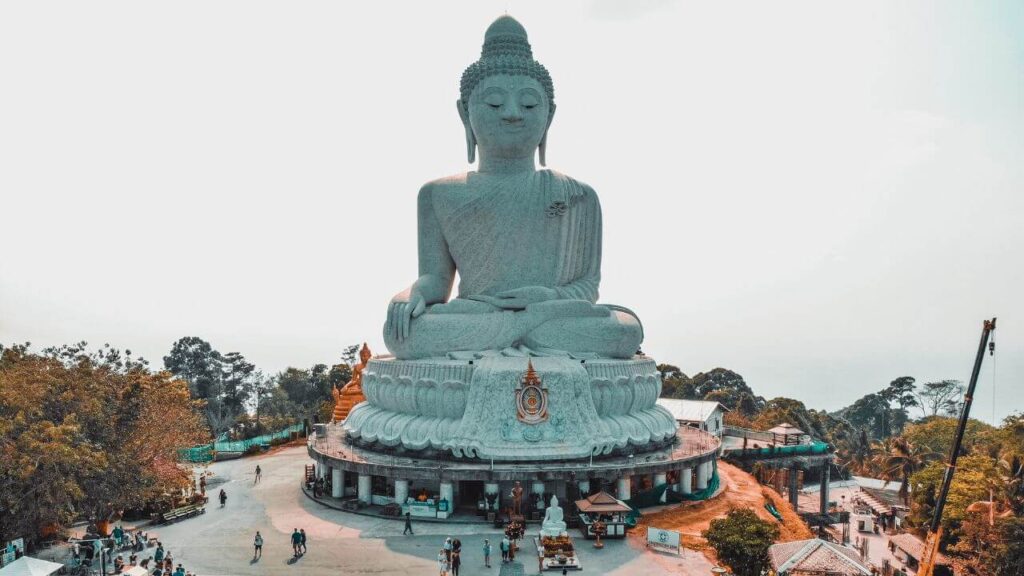
Singapore is An excellent destination for families seeking a blend of nature, culture, and modern attractions. The city-state is known for its cleanliness, safety, and diverse food scene. Attractions like Sentosa Island, Universal Studios, and the Singapore Zoo are popular among families.
Each destination offers a unique experience, from cultural immersion to adventure and relaxation. By considering these factors and goals, you can plan a trip that will be both enjoyable and memorable for your entire family.
Budgeting and Saving for the Trip
Planning a family trip to Asia requires careful budgeting and saving strategies to ensure a smooth and enjoyable experience. Here’s how you can effectively manage your finances for the trip:
Estimating Costs
Flights: Airfare can be a significant part of your travel budget. Prices vary widely based on the destination, time of year, and how far in advance you book. Use fare comparison websites and consider flexible travel dates to find the best deals.

Accommodation: Costs vary from luxury resorts to budget hotels and hostels. Family-friendly accommodations like serviced apartments or vacation rentals can offer more space and amenities at a reasonable cost.
Food: Asian cuisine is diverse and generally affordable. Budget for a mix of dining experiences, from street food to occasional fine dining. Some destinations like Singapore might have higher food costs than places like Vietnam or Thailand.
Activities: The cost of activities can add up, especially in tourist hotspots—plan and budget for major attractions, guided tours, and special experiences. Look for family discounts and package deals.
Tips for Saving and Budget-Friendly Travel Options
Early Planning: Book flights and accommodations well to get the best rates. Avoid peak travel seasons to escape high prices and crowds.
Travel Savings Account: Start a dedicated travel savings account and contribute to it regularly. Small, consistent savings can accumulate significantly over time.
Local Sim Cards: Instead of costly international roaming, use local SIM cards for mobile data and calls, which are much cheaper.
Public Transportation: Utilize public transport systems, which are often affordable and efficient, especially in countries like Japan and Singapore.
Eat Like a Local: Explore local markets and street food for authentic and cost-effective dining experiences.
Free Activities: Look for free activities like public parks, temples, and museums with no entrance fee. Walking tours can also be a budget-friendly way to explore a city.
Travel Insurance: Invest in good travel insurance. It might seem like an extra cost, but it can save you money in case of unexpected medical expenses or travel disruptions.
By carefully planning and adopting these saving strategies, you can make your family trip to Asia more affordable without compromising on the richness of your travel experience.
Travel Documentation and Vaccinations
Navigating the requirements for travel documentation and vaccinations is crucial in planning your family trip to Asia. Each country has its own set of regulations, so it’s important to be well-prepared.
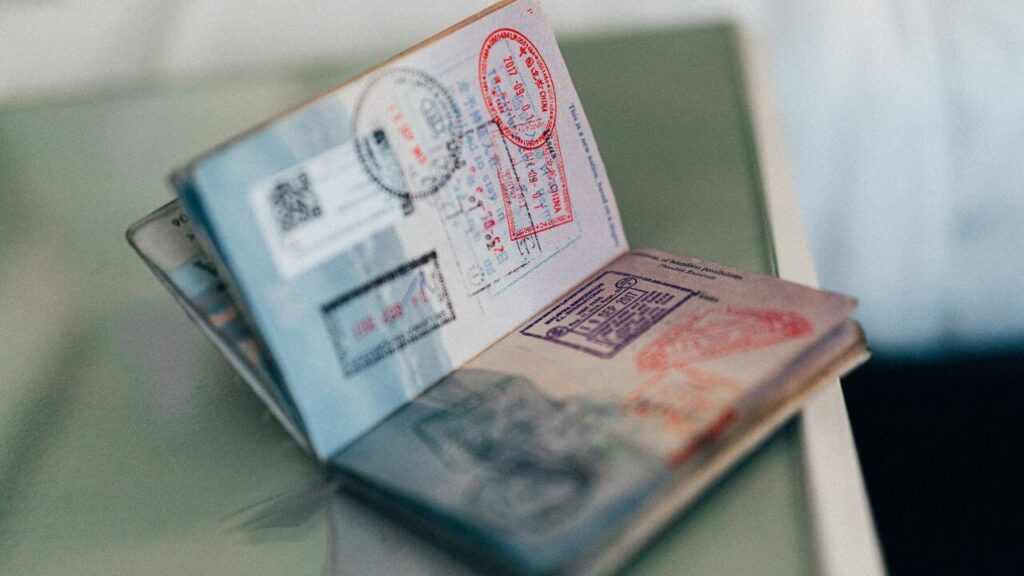
Passport and Visa Requirements
Passports: Ensure that every family member has a valid passport. Most Asian countries require your passport to be valid for at least six months before entry.
Visas: Visa requirements vary by country and nationality. Some Asian countries offer visas on arrival or e-visas for short stays, while others require a visa to be obtained in advance. For instance, Japan and Singapore often allow visa-free entry for many nationalities for short visits, while countries like China and India typically require visas that must be arranged before travel.
Travel with Children: If you’re traveling with children, especially if one parent is not present, it’s advisable to carry a consent letter from the non-traveling parent(s) and copies of birth certificates to avoid any issues at immigration.
Recommended Vaccinations and Health Preparations
Routine Vaccinations: Make sure your family’s routine vaccinations (like MMR, diphtheria-tetanus-pertussis, varicella, polio, and yearly flu shots) are up-to-date.
Travel-Specific Vaccinations: Additional vaccinations may be recommended or required depending on your destination. Common travel vaccinations include hepatitis A and B, typhoid, Japanese encephalitis, and rabies. Malaria prophylaxis may be advised for travel to certain rural areas.
Destination-Specific Health Advice: Consult a travel health clinic or your healthcare provider at least 6-8 weeks before your trip. They can provide destination-specific health advice and vaccinations.
Health Insurance: Ensure you have adequate travel health insurance that covers medical evacuation. Not all regular health insurance plans provide coverage overseas.
Carrying Medications: If you’re traveling with prescription medications, keep them in their original labeled containers and bring copies of your prescriptions.

By taking care of these essential travel documentation and health precautions, you can ensure a safer and more comfortable journey for your family in Asia. Remember, regulations can change, so it’s important to check the latest requirements well in advance of your trip.
Booking Flights and Accommodations
When traveling to Asia with your family, finding the right flights and accommodations is key to a comfortable and enjoyable trip. Here are some tips and recommendations to help you make the best choices.
Tips for Finding Family-Friendly Flights
Book in Advance: Book your flights well in advance to get the best prices and more options for seating arrangements.
Flight Timing: Consider flights with timings that align with your children’s routines, like overnight flights for long journeys, which can coincide with their sleep times.
Seating Arrangements: When booking, look for airlines that offer family-friendly seating options. Some airlines can book seats with extra legroom or bassinets for infants.
In-Flight Amenities: Check for family-friendly amenities such as on-board entertainment, child meals, and free baggage allowances for strollers and car seats.
Stopovers: For long-haul flights, consider if a stopover is necessary. Sometimes, a break in the journey can make the travel less exhausting for the family.
Recommendations for Family-Friendly Accommodations
Hotels: Many Asian hotels cater to families, offering spacious or interconnected family rooms. Look for hotels with amenities like swimming pools, kids’ clubs, and on-site restaurants, which can be very convenient.
Resorts: Resorts are an excellent option for families, as they often have extensive facilities, including children’s activities, babysitting services, and various dining options. Beach resorts in places like Bali or Phuket are particularly popular with families.

Airbnb and Vacation Rentals: Renting an apartment or a house can give your family more space and flexibility. It’s also a great way to experience local living. Look for properties with family-friendly amenities like a kitchen, laundry facilities, and a safe neighborhood.
Location: Choose accommodations that are centrally located or close to major attractions to minimize travel time and ease of access to sights, dining, and shopping.
Read Reviews: Always check recent reviews from families who have stayed in the accommodations. They can provide valuable insights into how family-friendly and convenient the place is.
Considering these factors when booking your flights and accommodations, you can ensure a more relaxed and enjoyable travel experience for your entire family. Remember, what works best can vary greatly depending on the ages of your children and your family’s specific needs and preferences.
Packing Essentials
Packing effectively for a family trip to Asia involves considering the diverse climates, cultural norms, and practical needs of family travel. Here’s a guide to help you pack smartly:
Packing List Tailored for Asian Climates and Cultural Norms
Clothing
- Light, breathable fabrics are ideal for the warm and humid climate in many parts of Asia.
- Include a mix of casual and modest attire. In some cultural sites, covering shoulders and knees may be required.
- Pack comfortable walking shoes for sightseeing and a pair of sandals or flip-flops, especially if visiting beaches.
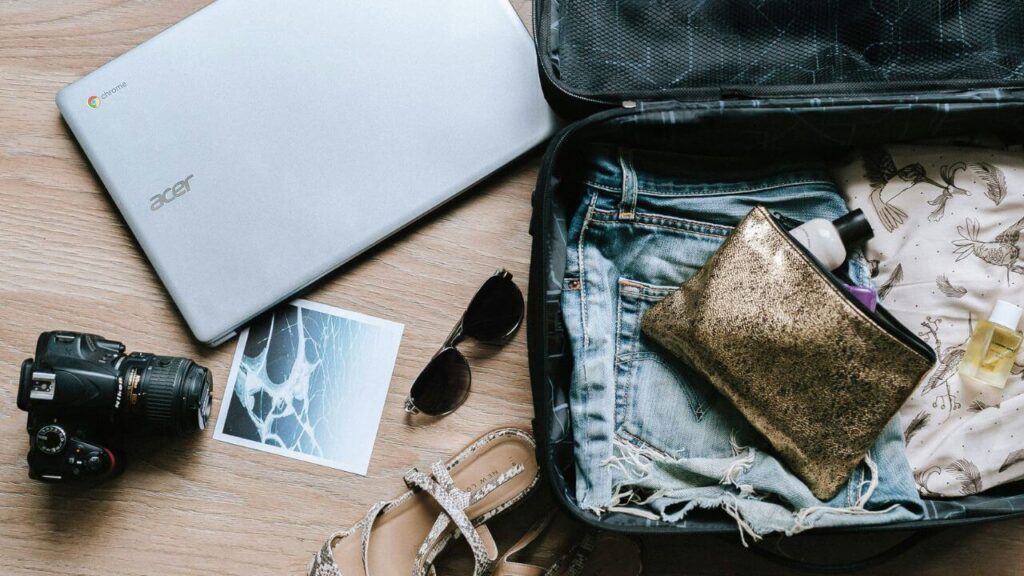
Weather-Specific Items
- Rain gear (lightweight raincoats or umbrellas) for monsoon-prone areas.
- Warmer layers are needed in winter if traveling to higher altitudes or cooler regions, like in Northern China or Japan.
Sun Protection
- High-SPF sunscreen, hats, and sunglasses to protect against strong sun, especially in Southeast Asia.
Cultural Respect
- Small gifts from your home country, as gift-giving can be, a part of Asian culture.
- Conservative swimwear for countries with more conservative norms.
Must-Haves for Family Travel
Comfort Items for Kids
- Favorite small toys, books, or activity kits to keep kids entertained during flights and downtime.
- Snacks, especially those familiar from home, can be a comfort during travel.
- Child-specific items like diapers, baby wipes, and formula, if applicable.
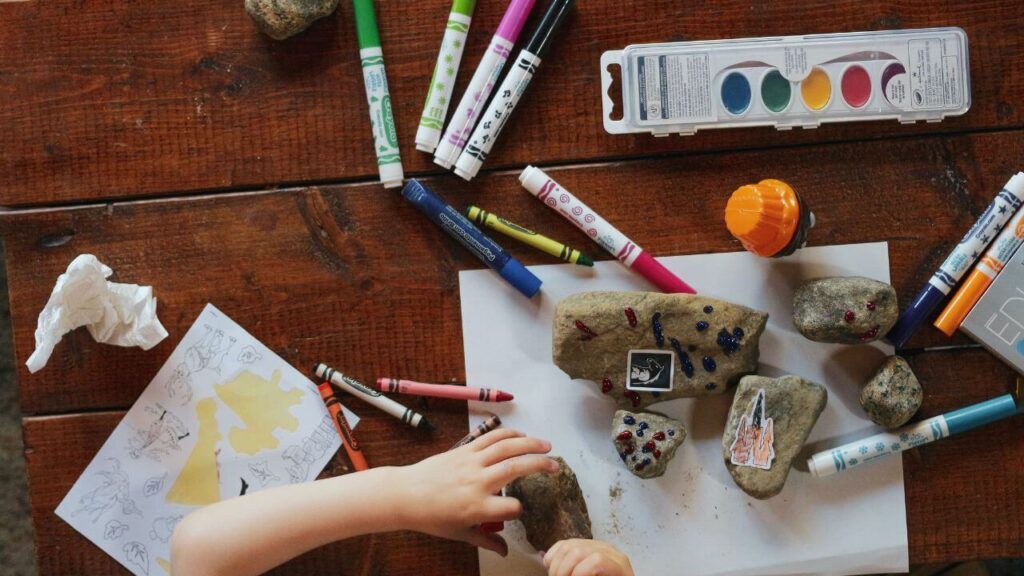
Travel Essentials
- Travel documents (passports, visas, travel insurance information).
- Multiple copies of important documents, stored separately.
- Portable chargers/power banks and appropriate plug adapters for your devices.
- Lightweight, foldable bags or backpacks for day trips.
Health and Hygiene
- Hand sanitizer and travel-sized toiletries.
- Water purification tablets or a water filter bottle, particularly if traveling to remote areas where water quality may be a concern.
By packing wisely and considering these essentials, you can ensure that your family is well-prepared for Asia’s diverse experiences. Packaging light and smart can make your travel more enjoyable and hassle-free.
Cultural Preparation and Language
Traveling to Asia with your family is a journey across the globe and an immersion into diverse cultures and languages. Preparing your family for these differences can greatly enhance your travel experience.
Introducing Your Family to the Cultures and Customs of the Destination
Research and Discuss: Before your trip, spend time researching the culture, history, and customs of your destination. Share interesting facts and stories with your family to build excitement and understanding.
Cultural Norms and Etiquette: Teach your family about local etiquette and customs. For instance, in Japan, it’s customary to remove shoes before entering a home, and in many Southeast Asian cultures, it’s important to avoid touching someone’s head.
Food and Cuisine: Explore the local cuisine through cooking classes or food tours. Trying out some recipes at home before the trip can also be a fun way to introduce new flavors.
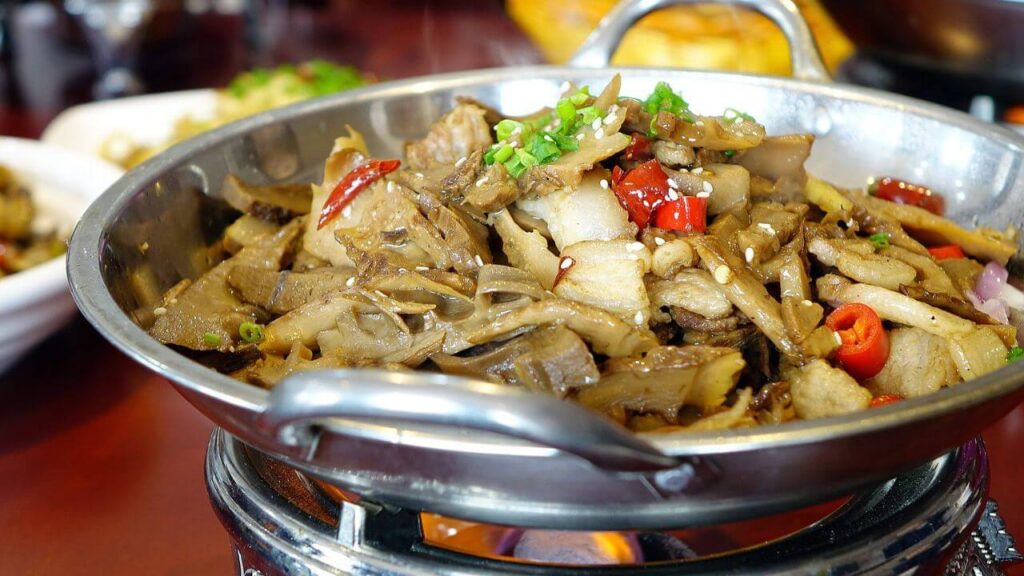
Cultural Activities: Plan to participate in cultural activities, such as a traditional dance show in Bali or a Thai cooking class. This hands-on approach is particularly engaging for children.
Respect for Religion and Traditions: Teach your family to respect religious practices and sacred sites. Dressing modestly when visiting temples and learning about the significance of these places can be very educational.
Basic Language Phrases to Learn for Easier Communication
Greetings and Polite Phrases: Teach your family basic greetings like “Hello,” “Thank you,” and “Goodbye.” In Japanese, for instance, this would be “Konnichiwa,” “Arigato,” and “Sayonara.”
Essential Questions: Learn how to ask key questions such as “Where is the bathroom?” or “How much does this cost?” Even a basic attempt to speak the local language can go a long way in interacting with locals.
Numbers and Directions: Understanding numbers can help in shopping and dining, while basic directional phrases can aid in navigation.
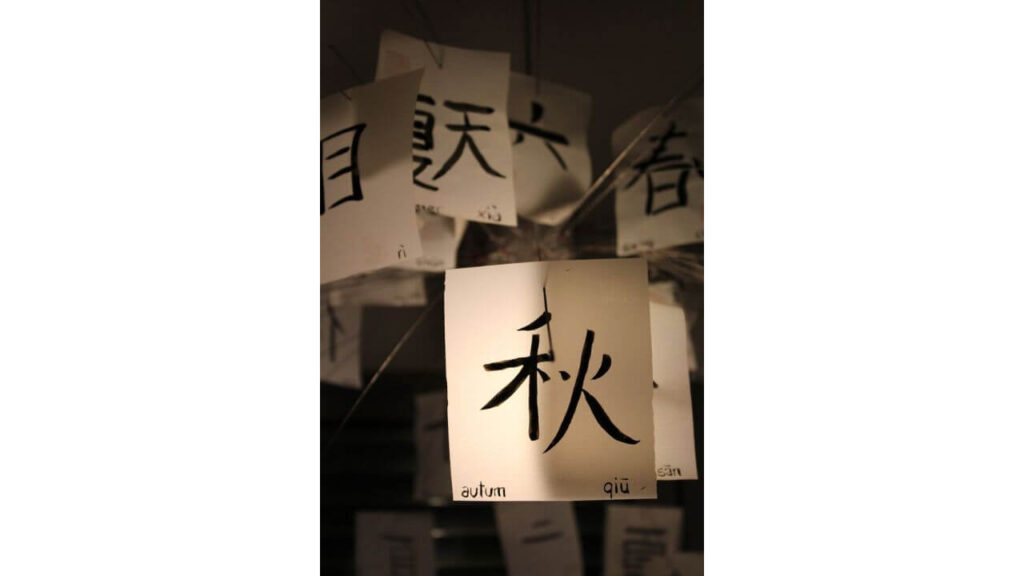
Language Apps and Books: Utilize language learning apps, phrasebooks, or even children’s books in the language of your destination for easy and fun learning.
Cultural Sensitivity in Language: Be aware of the tone and formality in your speech. In many Asian cultures, politeness and respect are highly valued, especially in language.
By preparing your family for the cultural and linguistic aspects of your Asian destination, you can foster a deeper understanding and appreciation of the places you visit. This preparation makes your trip more enjoyable and helps build global awareness and respect in your family.
Staying Safe
Traveling in Asia with your family can be a remarkable experience, but it’s essential to prioritize safety and health to ensure a trouble-free journey. Here are some key tips to keep in mind:
Safety Tips for Traveling with Children
Accommodation Safety: Choose family-friendly accommodations with reasonable security measures. Check for amenities like in-room safes, 24-hour security, and child-proofing if traveling with young children.
Supervision and Identification: Always watch your children, especially in crowded places like markets, train stations, or tourist attractions. Equip them with identification cards or bracelets with your contact information and the address of your accommodation.
Travel Insurance: Ensure that your travel insurance covers your entire family, including medical emergencies and evacuation.
Road Safety: Be cautious on roads, as traffic rules and conditions can be very different from what you’re used to. Use reputable taxi companies or ride-sharing services where available.
Water Safety: Be mindful of water safety, especially if your trip includes beach destinations or swimming pools. Always supervise swimming activities.
Dealing with Food Safety, Allergies, and Health Care

Food Safety: Eat at reputable restaurants and avoid street food if you have a sensitive stomach. Look for places that are busy and appear clean. Drinking bottled or purified water is advisable in many parts of Asia.
Managing Allergies: If traveling with family members who have food allergies, carry allergy cards written in the local language, explaining the allergies in detail. Always carry necessary medications, like antihistamines or epinephrine injectors.
Preventative Measures: Protect against mosquitoes in areas where there is a risk of diseases like dengue or malaria. Use mosquito repellents and sleep under mosquito nets where necessary.
Healthcare Facilities: Know the locations of reputable hospitals or clinics in the areas you are visiting. In major Asian cities, medical facilities are often excellent, but healthcare standards can vary in more remote areas.
Hygiene Practices: Encourage regular hand washing and carrying hand sanitizer, especially before meals.
Adjusting to Climate: Be mindful of the heat and humidity, particularly in Southeast Asia. Stay hydrated, use sun protection, and avoid excessive physical exertion in extreme heat.
By taking these precautions and being prepared, you can significantly reduce the risks and enjoy a healthy, safe, and memorable family trip to Asia. Remember, a little planning can go a long way in ensuring the well-being of your family while exploring new and exciting destinations.
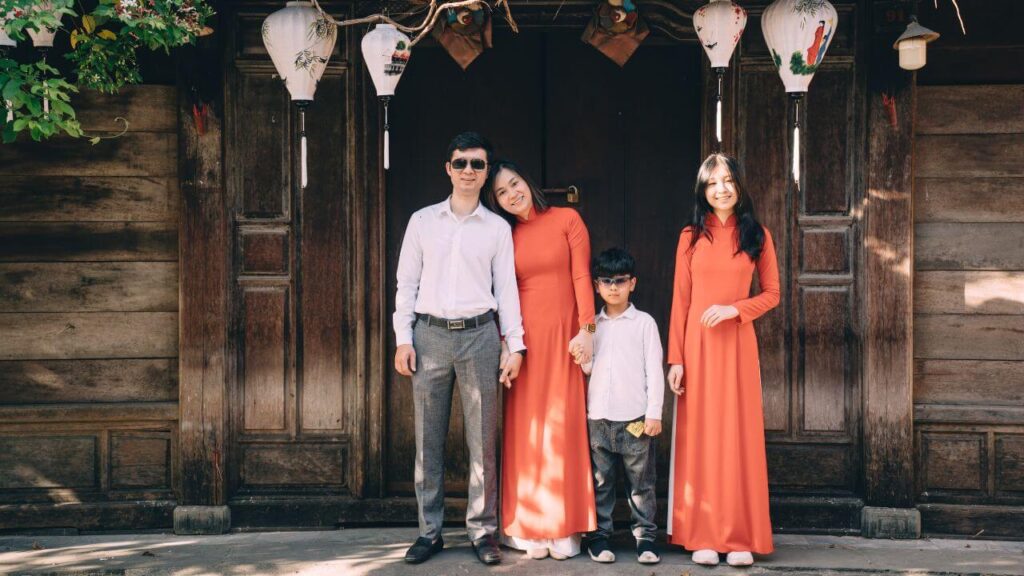
Traveling to Asia with your family can be a transformative experience, filled with unique cultures, breathtaking landscapes, and unforgettable adventures. From navigating the bustling streets of Tokyo to lounging on the serene beaches of Thailand, each moment offers an opportunity for learning and bonding. This comprehensive guide on how to travel in Asia with your family aims to make your trip seamless and enriching, highlighting the importance of careful planning, cultural awareness, and safety considerations. By choosing the right destinations, preparing for cultural differences, and focusing on health and safety, you can ensure a trip that’s as smooth as it is exciting. Here are some ideas about the best indoor activities for all ages in Asia. Embrace the diverse beauty of Asia, where each country unfolds its magic, making it the perfect backdrop for creating lasting family memories. Whether it’s your first family excursion to Asia or a return visit, each trip is a chance to deepen family connections and explore the wonders of this vibrant continent. So pack your bags, embark on this incredible adventure, and let Asia’s charm and diversity enrich your family’s travel experience.

